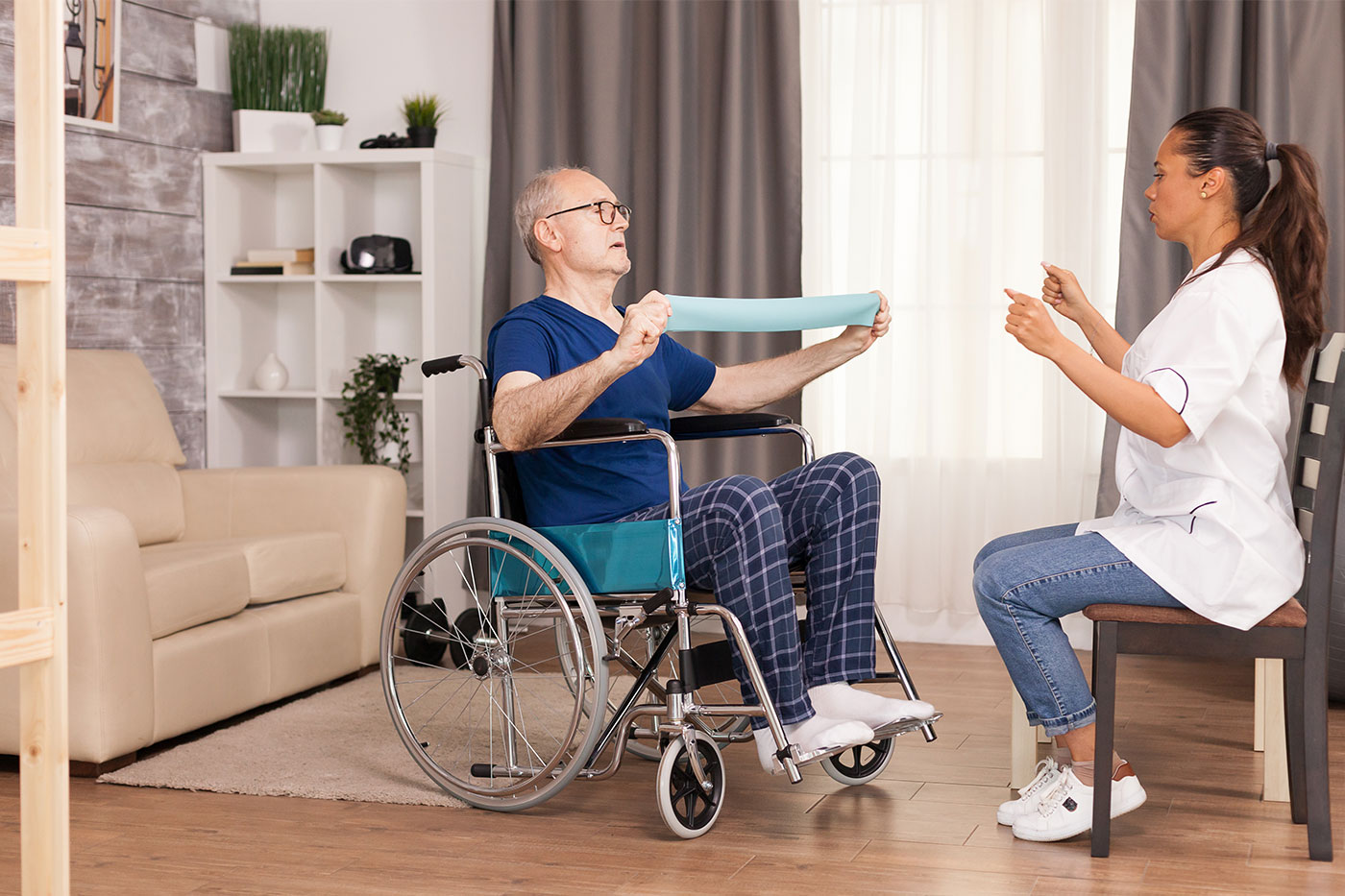Phone: 800-414-2358
Fax: 718-946-6727
- Bathroom Aids
- Respiratory Care
- Disability Accessories
- Walking Aids
- Wheelchairs
- Patient Room
- Bariatric Items
Phone: 800-414-2358
Fax: 718-946-6727

Exercising When You Are Wheelchair Bound
- by
- Steve Zeltser
- -
- February 06, 2018
- -
Getting regular exercise is a challenge for anyone, but even more so when you are bound to a wheelchair. Yet spending long hours in a chair without physical activity can be debilitating and can even lead to premature death. A big challenge to anyone starting an exercise program is knowing what to do.
Exercise Guidelines
The American College of Sports Medicine establishes exercise standards and guidelines for every population. Following are the ACSM’s minimal recommendations for adults:
- Cardiorespiratory Exercise: At least 150 minutes per week. While cardio can be challenging in a chair, it is not impossible. Put on some upbeat music, and just get moving! Short bouts of 10 minutes to elevate your heart rate, three times per day, is enough to meet guidelines.
- Resistance Exercise: Two or three sets of 10 to 15 repetitions, at least twice per week, working all major muscle groups. Challenge yourself!
- Flexibility Exercise: Two to three days a week, stretch all your major muscle groups, preferably when muscles are warm. Hold stretches at their longest length for 30 to 60 seconds. Stretching immediately after resistance training is ideal.
- Neuromotor Exercise: Balance, agility and coordination keep your brain and body in tune with each other and reduce the risk of injury. Try chair yoga, tai chi or qigong twice per week.
While it may seem challenging to meet minimal guidelines, doing so will make you feel better, physically, mentally and emotionally, and it will improve your quality of life.
Muscle Groups
Your muscles work together in groups to help you perform everyday movements. Unless you intend to compete in wheelchair sports or races, training should focus on maintaining functionality for activities of daily living (ADL).
While there are many ways to categorize muscle groups, the following are geared to maintaining functional fitness while wheelchair bound:
- Upper body “push” muscles: Chest, triceps and shoulders create a pushing motion. Push with resistance, both forward and overhead.
- Upper body “pull” muscles: Mid and upper back muscles and biceps create a pulling motion. Rowing and pulling downward with resistance will strengthen this group.
- Lower body “push” muscles: Quadriceps, gluteals and calves give your lower body a push. Knee extensions and ankle flexion exercises do the trick. As much as you are able, do hip extension exercises to offset long hours of sitting.
- Lower body “pull” muscles: Hamstrings and shins perform a lower body pull. Bend your knees agaiinst resistance, and flex your ankles to bring your toes towards your shins.
- Core and lower trunk muscles: Abdominal, pelvic floor and low back muscles stabilize your spine and coordinate upper and lower body movement. Trunk rotations, knee raises and forward flexion against resistance target these muscles. Kegel exercises also help.
A balanced exercise program will strengthen and stretch all your major muscle groups, giving you optimal range of motion in your joints.
Exercise Equipment
While some people are lucky enough to have a home gym with cardio and resistance equipment, most of us do not. Luckily, you do not need expensive equipment that takes up space and collects dust.
A few simple devices that are inexpensive and easy to store are all you need to get optimal results:
- Resistance therapy bands: Wide latex therapy bands are lightweight and come in a range of thicknesses
- Resistance tubing: Inspired by surgical tubing, these devices have handles and also come in a range of thicknesses for varied resistance
- Medicine balls: Ranging from super light to heavy, medicine balls are easy to hold onto and will not damage floors if dropped
- Small kettle bells: Kettle bells are versatile and easy to grip, and come in a broad range of weights
Home exercise equipment is readily available at discount stores and online.
Exercise Routines
Thanks to technology, exercise routines are just a few clicks away. YouTube has dozens of wheelchair exercise routines that are easy to follow, so you never have to get bored with the same workout. And of course they are free of charge.
Hiring a personal trainer to come to your home is another option. It adds a social element to your workouts, and a trainer will keep you motivated. Your trainer can tailor your routine to meet your needs and preferences, and they will make sure you are doing the exercises properly, and can adjust your program as you grow stronger.
No matter how you do it, exercise is the best medicine to help you live longer, stay well and enjoy the very best quality of life.

Fast Delivery

Special Discount

Secure Checkout





